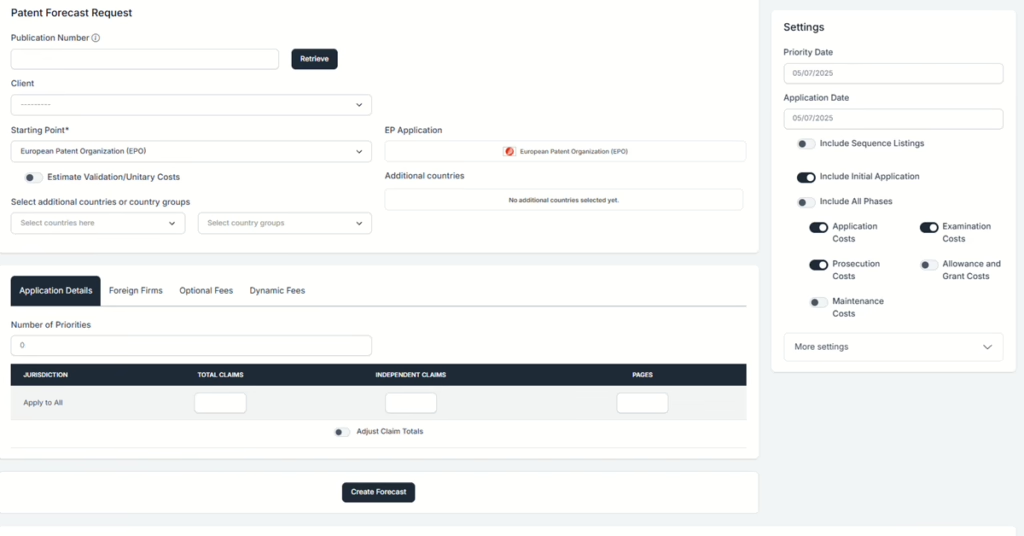Forecasting costs for European patents can be challenging due to the variety of choices and costs that IP owners face. In this overview, we break down the process so that you can get the right forecast for your needs.
This page serves as your starting point, outlining the key phases and linking to detailed guides for each type of EP forecast.
When do you need to do an EP forecast?
IP owners need to know their upcoming costs at two key milestones in the life of an EP patent application.
- At the Time of Filing
When filing a new application, there will fees paid to European associates and the European Patent Office (EPO). - At the Time of Grant
Once an EP application is allowed, IP owners must decide among several protection strategies with different costs.

Your EP Forecasting Options
You can easily forecast any of the potential EP costs, but there are some nuances to each option, so we have broken the process into easy-to-follow elements.
Click links below to explore each part of the process in detail:
Forecasting Options at Filing:
- Creating an EP Application Forecast
Step-by-step guide to forecasting costs for a new EP application.
Forecasting Options at Grant:
- Creating an EP Validation Forecast
How to forecast the costs associated with the grant of the EP matter, plus the costs in each country that you are going to designate for validation/extension. - Creating an EP Unitary Forecast
How to forecast the costs associated with the grant of the EP matter and use of the Unitary patent process for coverage. - Creating a Combined EP and Unitary Forecasts
How to forecast costs associated with the grant of the EP matter, plus Unitary and traditional validation coverage.


